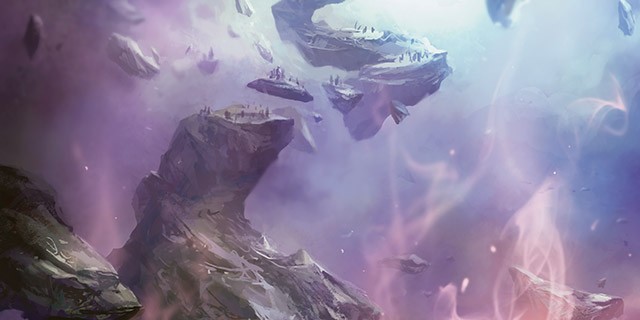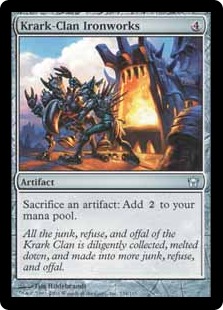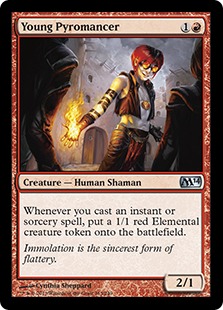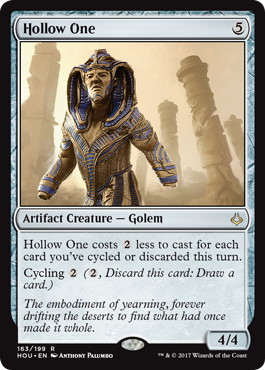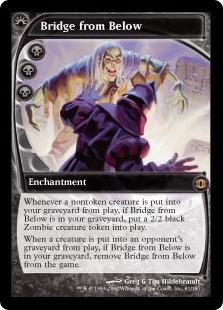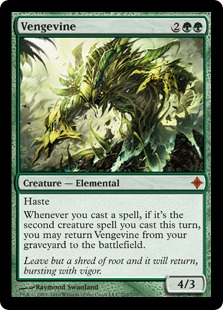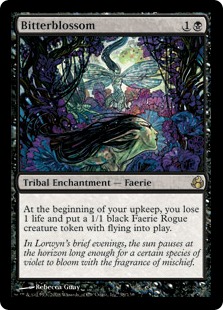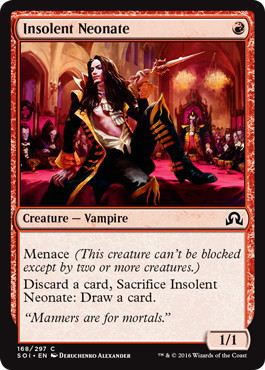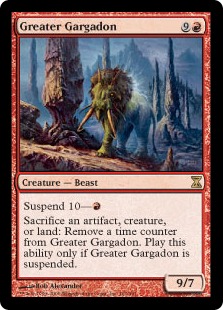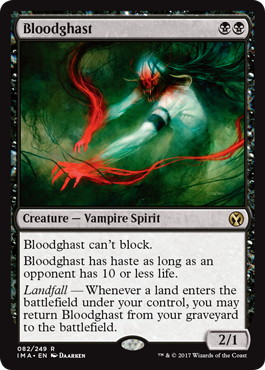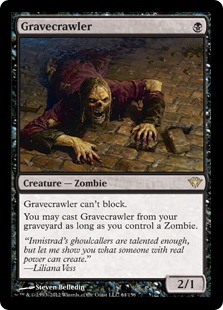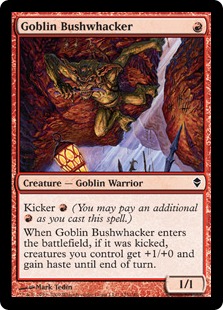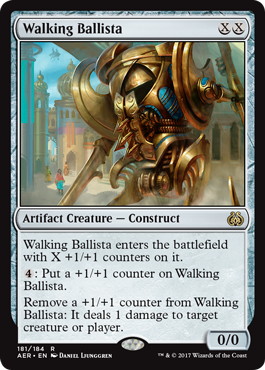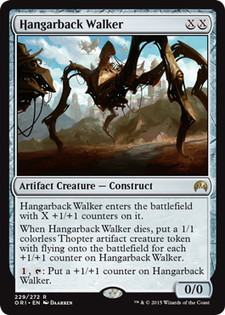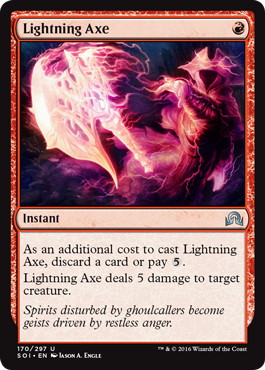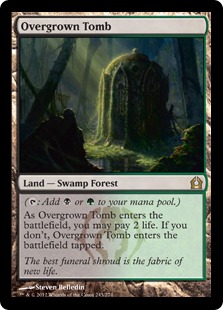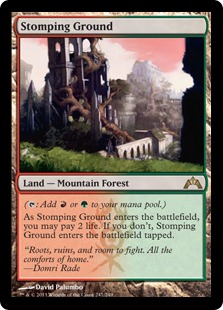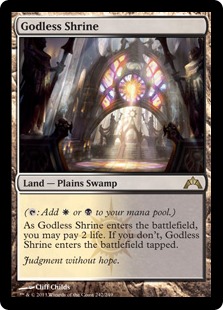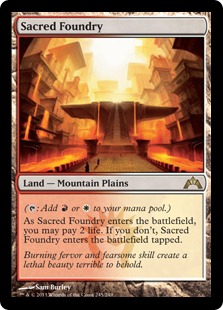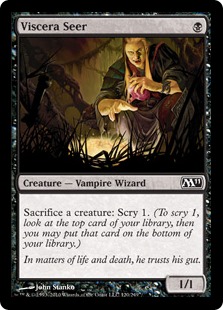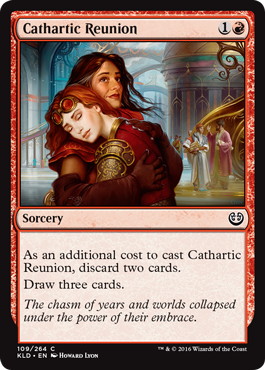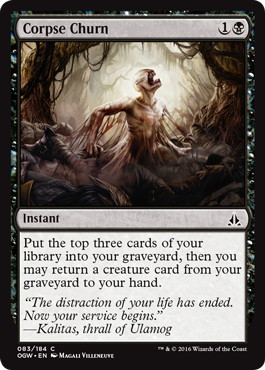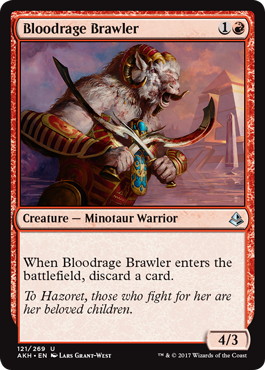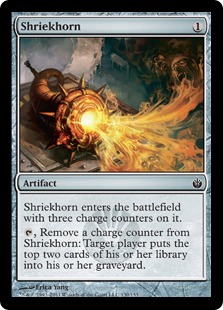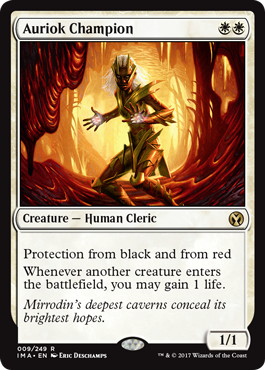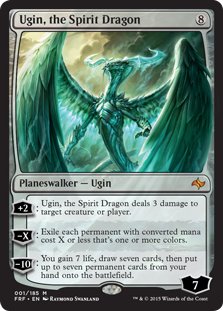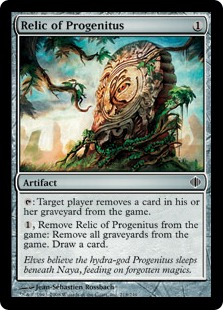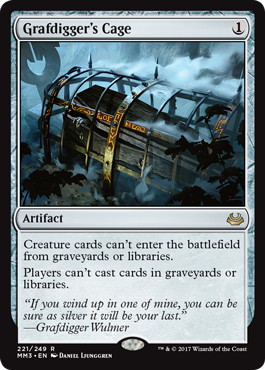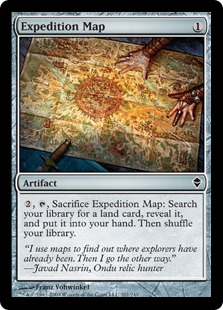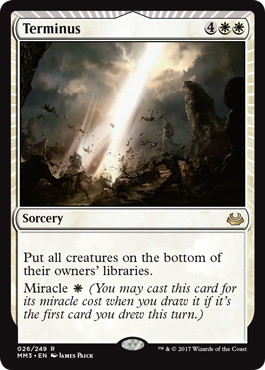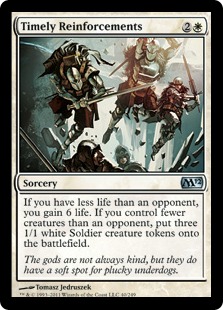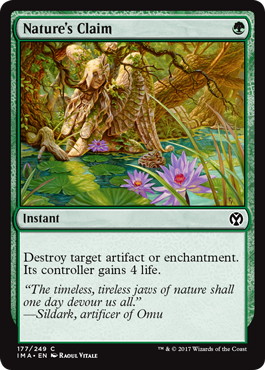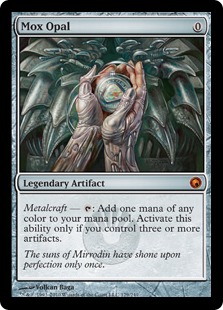Introduction
My name is Jacob Nagro and recently I was fortunate enough to finish in 7th place at Pro Tour 25th Anniversary alongside teammates Jonathan Sukenik and Hunter Cochran.
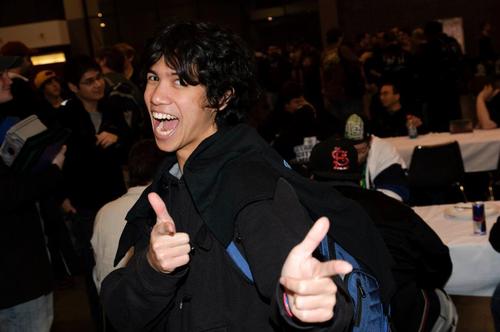
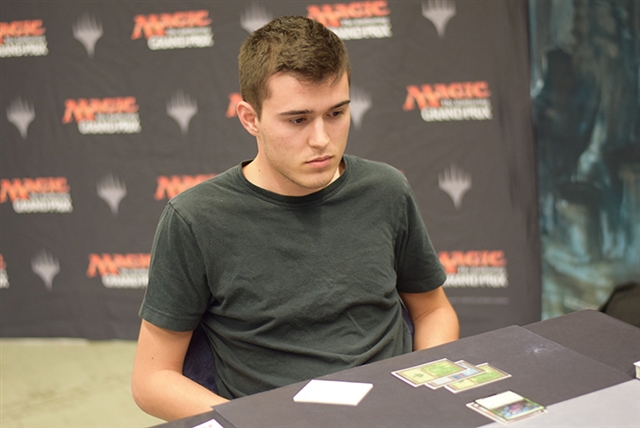
Jonathan Sukenik and Hunter Cochran
(Image Copyright : Wizards of the Coast)
This result has now made me a Gold Level Pro and I’m very excited to continue playing in Pro Tours and proving myself as a great player. Unlike a lot of people I’ve met on the PT, Modern happens to be my favorite format. I mostly enjoy Modern because I enjoy combo decks or decks that have a lot of moving pieces within themselves. Even though this can often lead to some very uninteractive games, I appreciate the time I spend learning all of the interactions my deck can provide for itself, as well as the interactions that can sometimes come up depending on what my opponent is playing.
Before this PT I found myself learning the many interactions of 《Krark-Clan Ironworks》 (KCI) for about 3 months, between Matt Nass’s 1st, 2nd and 3rd GP top 8 with the deck, but then about a month before the PT I decided I probably should start looking at other Modern decks to give myself more options. I started trying both Mardu Pyromancer and RB Hollow One around the same time, and quickly determined RB Hollow One felt much better.
Then a couple weeks before the PT I noticed “RB Bridgevine” decks were continuing to show up in Modern 5-0 lists, and as I usually do with new Modern decks I try them for myself. Thanks to the newly printed 《Stitcher's Supplier》, the archetype had gained a nice upgrade in consistency from previous iterations. I found myself highly enjoying the deck and making my own changes to it that I found other people weren’t making.
In the end I found myself winning about as much as I did with other tier 1 Modern decks, but when I started going through my matches I noticed something really interesting. I had an absurd win rate against all of the decks I was considering playing myself for this PT, and almost all of my losses consisted of decks that I didn’t think were well positioned in Modern anyways.
This gave me a lot of confidence going into the PT, and in the end the deck basically performed how I expected. Here is a record of my individual results each round:
| Round | Deck | Result |
|---|---|---|
| Round 1 | Bye | (Yes, I am that lucky) |
| Round 2 | Urza Tron | 2-1 |
| Round 3 | 5C Humans | 0-1 (Teammates won as I started game 2) |
| Round 4 | UW Control | 2-1 |
| Round 5 | Jeskai Control | 2-0 |
| Round 6 | Bant Spirits | 2-0 |
| Round 7 | KCI | 2-1 |
| Round 8 | UW Control | 1-2 |
| Round 9 | KCI | 2-1 |
| Round 10 | Jund Bridgevine | 0-2 |
| Round 11 | Dredge | 2-0 |
| Round 12 | RB Hollow One | 1-2 |
| Round 13 | 5C Humans | 2-1 |
| Round 14 | 5C Humans | 2-1 |
A lot of people have asked me if I think the deck is overpowered, and my answer to that is that I believe it to be another tier 1 Modern deck. It has some very polarizing matchups, but also has the ability to steal games in bad matchups due to its ability to win on turn 3 or sometimes even turn 2.
Bridgevine sits in a really interesting position in Modern right now, where I feel like its best matchups are some of the most popular decks in Modern, but it can struggle against a lot of the other decks. I felt quite good about taking it to the PT where I expected people to pick only the best Modern decks because they had their teammates counting on them and influencing their decisions.
Decklist And Card Choices
I played the following at the PT:
- Jacob Nagro
- – RB Bridgevine
- Pro Tour 25th Anniversary
- (7th place)
4 《Blood Crypt》
2 《Bloodstained Mire》
2 《Wooded Foothills》
2 《Arid Mesa》
2 《Scalding Tarn》
4 《Blackcleave Cliffs》
-Land (17)- 4 《Walking Ballista》
3 《Hangarback Walker》
4 《Stitcher's Supplier》
4 《Insolent Neonate》
4 《Goblin Bushwhacker》
4 《Gravecrawler》
4 《Bloodghast》
4 《Vengevine》
4 《Greater Gargadon》
-Creature (35)-
3 《Ingot Chewer》
3 《Thoughtseize》
3 《Lightning Axe》
2 《Bitterblossom》
-Sideboard (15)-
Moving forward the only change I would definitely recommend is removing the 《Bitterblossom》 from the sideboard for something else. For now I would say add the 4th 《Ingot Chewer》 and 《Thoughtseize》, but I do think it’s worth exploring other options which I will delve into later.
Next I’m going to break down all the cards in my deck and explain their role.
《Vengevine》 and 《Bridge from Below》
There are the namesake cards of the deck for a great reason. They lead to all of your best draws, and are so powerful that you are willing to play 0 mana 0/0s to exploit their power level. It’s noteworthy that in my list these cards have absolutely no effect while in your hand and against cards like 《Leyline of the Void》 or 《Rest in Peace》, but I think the games that your opponent doesn’t have access to those cards they are too powerful to ever consider siding any copies out.
《Faithless Looting》 and 《Insolent Neonate》
These are your best enablers. They are the only cards in my main deck that allow to discard your 《Vengevine》 or 《Bridge from Below》, and they are often the cards you are looking for in an opening hand.
《Stitcher's Supplier》
This is the new enabler that adds a lot of consistency to the deck. While not always optimal, I believe opening hands with 2 《Supplier》 or 1 《Supplier》 and a 《Greater Gargadon》 are usually keeps, as milling 6 cards can usually give you access to some of your graveyard cards. The fact that it’s a Zombie creature is also why 《Gravecrawler》 can now be included in the deck.
《Greater Gargadon》
This is the card that sets my list apart from most others. People seem pretty high on 《Viscera Seer》 because it more directly helps return 《Vengevine》. I found my control opponents were easily able to answer my 《Viscera Seer》 and then use cards like 《Path to Exile》, 《Anger of the Gods》, or 《Terminus》 on my recursive threats. Because of this I moved to 《Greater Gargadon》 as it is basically impossible to interact with, and I learned a lot more things about the power of 《Greater Gargadon》 in the process.
After I explain these points people are still often surprised that I play all 4 《Greater Gargadon》 and 0 《Viscera Seer》, as 《Greater Gargadon》 can be dead in multiples. But I just find having access to it so powerful that I want to maximize my chances. Also I really don’t think having multiple 《Viscera Seer》 is that useful outside of it helping with 《Vengevine》, which I really don’t run into many issues with in my current creature count.
《Bloodghast》 and 《Gravecrawler》
《Gravecrawler》 is a pretty normal inclusion, some people only play 3 which can make sense if they’ve chosen 《Viscera Seer》 over 《Greater Gargadon》. A big difference from my list compared to others is the inclusion of all 4 《Bloodghast》. Both of these cards can provide a lot of value with access to 《Greater Gargadon》 and 《Bridge from Below》, but 《Bloodghast》 can even help power out a 《Gargadon》 surprisingly fast without access to a 《Bridge》.
Both of these cards also just give you some extra cards to discard to 《Looting》 or 《Neonate》, or can give you extra value from 《Stitcher's Supplier》. If for whatever reason you end up going lower on 《Bloodghast》, I could understand going lower on 《Greater Gargadon》 as well, as the two pair quite nicely together.
《Goblin Bushwhacker》
This is a nice roleplayer in the deck that can help you abuse spitting out a lot of Zombies quickly, and is part of most of your quick kills. Every now and then you can even cast it for 1 to help get back a 《Vengevine》. It’s a card you often look for in opening hands in postboard games where you expect graveyard hate, because it’s your best path to victory in those spots.
《Walking Ballista》 and 《Hangarback Walker》
These are the cards that can help with your most busted draws. 《Walking Ballista》 is certainly the most powerful of them as it can give you the option to kill your own creatures when you have a 《Bridge》, kill something like a 《Thalia, Guardian of Thraben》 that is blocking well, or even ping your opponent for the last few points or to put them to 10 life for 《Bloodghast》.
《Hangarback Walker》 awkwardly won’t make thopter tokens if your opponent controls a 《Rest in Peace》 or 《Leyline of the Void》, but sometimes you can spend time growing it against a deck like RB Hollow One and outsizing their creatures. It also can be occasionally useful in grindy matchups where they don’t have removal spells that exile it, or even to make flying blockers against a deck like Affinity.
In most games you will just play them as 0 mana 0/0s though, so if you decide to play 《Endless One》 instead of some of them it won’t be a big deal.
《Ingot Chewer》
This is the most synergistic sideboard card the deck has access to. It’s basically a 1 mana 0/0 and the deck already plays 0 mana 0/0s. Obviously this a downgrade, but any time you can actually destroy an artifact it’s huge upside. I am completely willing to side in 4 copies of this card against 5C Humans even if you told me they played no 《Grafdigger's Cage》 and their only artifact was 《AEther Vial》, because even if they don’t draw 《Vial》 you can still utilize 《Ingot Chewer》 with 《Bridge from Below》 or 《Vengevine》.
I could definitely see it being correct in certain metagames to play some number of 《Ingot Chewer》 main deck.
《Thoughtseize》
This card earns a sideboard slot because it’s generically powerful. It can help against combo and sometimes control. You can even target yourself with 《Thoughtseize》 if you really wanted to discard a 《Bridge》 or 《Vengevine》, although I’ve yet to want to make that play myself.
《Lightning Axe》
This card can be a little awkward at times because destroying your opponent’s creatures isn’t always profitable with 《Bridge from Below》, but it can still have nice synergy when you discard a 《Vengevine》. I’ve found a lot of the ways I lose to 5C Humans involves 《Mantis Rider》 and 《Meddling Mage》, and I just wanted access to something that can interact with them.
《Bitterblossom》
Like I said earlier, I would probably remove these. I added them at the last second because online I kept facing Jund with 《Leyline》, and I wanted something to help my fair game plan. They can also be useful in the mirror if you think your opponent is willing to mulligan to 《Leyline》.
《Leyline of the Void》
Part of me didn’t even want to play these, but the sideboard slots with this deck can be so bad anyways, and I was worried the PT would be the breakout tournament for Bridgevine. It seemed everyone else at the PT had the same concerns, but I think it’s worth noting that you should consider from week to week whether these actually deserve all 4 slots in your sideboard.
Cards I Didn’t Play
No Green or White Mana Sources
A high amount of players on Bridgevine at the PT seemed to include green mana sources for sideboard cards and the ability to cast 《Vengevine》. I opted to include as many lands that produce both red and black mana as possible with exception of 1 《Mountain》 because I wanted the option to save some life. In general I highly value “plan A” consistency in Modern, and I felt if I were to include cards like 《Overgrown Tomb》 or 《Stomping Ground》 it would hurt my ability to cast 《Gravecrawler》 multiple times in one turn or 《Faithless Looting》 into a “Kicked” 《Goblin Bushwhacker》.
I understand that both the ability to not be able to cast 《Vengevine》 and having 0 cards that destroy 《Leyline of the Void》 makes the card much more effective against me, but if I am expecting a lot of 《Leyline of the Void》 in Modern I would rather be playing a different deck. I know that some people may want to play this deck regardless of what their expected meta is, so moving forward it would be understandable to include green sources for 《Destructive Revelry》 or white sources for 《Wispmare》.
《Viscera Seer》
I delved into this card in my section on 《Greater Gargadon》. To add more, I built my deck to help my combo and control matchups because I expected a lot of KCI and UW at the PT. This card is probably better against 5C Humans as it is better against 《Meddling Mage》 and 《Reflector Mage》. Playing with 《Viscera Seer》 will also add some level of consistency to help with 《Vengevine》, especially on mulligans. If for whatever reason you move away from 《Bloodghast》 I would recommend more seriously considering 《Viscera Seer》.
Other Discard/Mill Enablers
This includes cards like 《Cathartic Reunion》, 《Corpse Churn》, 《Bloodrage Brawler》, or 《Shriekhorn》. I found my deck functions often enough with the way I have built it. This slot often takes up the 《Bloodghast》 slots, which would then make my 《Gargadon》 worse, and basically always slow my deck down to add some amount of consistency. I basically wanted to maximize my deck’s ability to win on turn 3 to help my KCI matchup, and I still feel my list is the best way to do that. Of these enablers my favorite is 《Bloodrage Brawler》 because it’s a creature, and to be honest I didn’t even consider it until Eric Severson showed me it was in his deck.
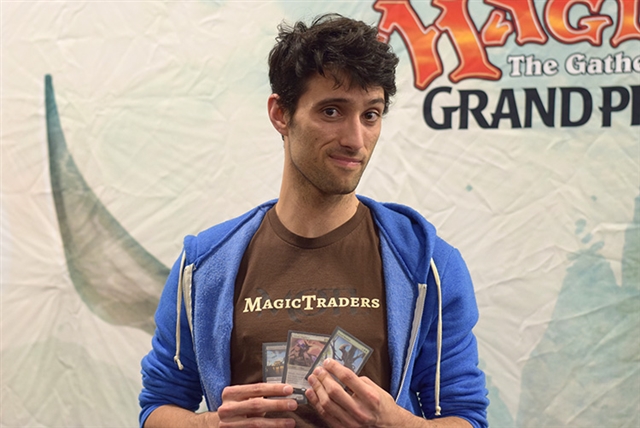
Eric Severson
(Image Copyright : Wizards of the Coast)
Sideboard Guide
In general I like to not sideboard much because the main deck doesn’t play dead cards and diluting your deck can really hurt it. I’m not going to list a ton of matchups, but for the most part I side lower on 《Gravecrawler》, 《Bloodghast》, and 1-2 《Greater Gargadon》.
I’ll also be writing this with my updated sideboard of -2 《Bitterblossom》, +1 《Ingot Chewer》, +1 《Thoughtseize》.
- Jacob Nagro
- – RB Bridgevine
- Sample List after Pro Tour
4 《Blood Crypt》
2 《Bloodstained Mire》
2 《Wooded Foothills》
2 《Arid Mesa》
2 《Scalding Tarn》
4 《Blackcleave Cliffs》
-Land (17)- 4 《Walking Ballista》
3 《Hangarback Walker》
4 《Stitcher's Supplier》
4 《Insolent Neonate》
4 《Goblin Bushwhacker》
4 《Gravecrawler》
4 《Bloodghast》
4 《Vengevine》
4 《Greater Gargadon》
-Creature (35)-
5C Humans

Against 5C Humans
In this matchup you are looking for your faster hands as they don’t play much to stop you. Consider saving 《Walking Ballista》 to deal with 《Auriok Champion》.
Urza Tron

Against Urza Tron
《Greater Gargadon》 is one of your best cards as it can make 《Ugin, the Spirit Dragon》 or 《Wurmcoil Engine》 ineffective against you.
《Ingot Chewer》 can often line up well against 《Relic of Progenitus》 or 《Grafdigger's Cage》 but I probably wouldn’t be scared to fire it off on an 《Expedition Map》 if your hand isn’t super fast. I also only used to have 3 《Thoughtseize》 and it’s possible bringing in 4 is overkill.
RB Hollow One

Against RB Hollow One
I somewhat operate under the assumption that my opponent is willing to mulligan heavily to find 《Leyline of the Void》. I could see not bringing in my own 《Leyline》 as their deck operates much better under 《Leyline》 than yours. I could also see removing 《Gravecrawler》 instead of 《Supplier》 if you think they aren’t willing to aggressively mulligan to 《Leyline》.
UW Control

Against UW Control
I don’t think you need to be incredibly fast so I remove some 0 drops. If you can “Suspend” a 《Greater Gargadon》 before they can use cards like 《Path to Exile》 or 《Terminus》 to deal with your board that’s usually the best play. 《Gargadon》 also can be used to prevent tokens from being made with 《Timely Reinforcements》 on certain board states.
I used to find this matchup very favorable but when I played against Gabriel Nassif he seemed to have a lot of sideboard cards for the matchup, so I think I could get be worse than I thought if they are prepared for it. You could read his report here.
《Krark-Clan Ironworks》 (KCI)

Against KCI
I know it’s pretty surprising to not bring in 《Leyline of the Void》 against KCI. I think my list is on average faster and they always bring in 4 《Nature's Claim》 anyways. I do think this changes if you move away from 《Gargadon》 and add 2 mana enablers though. If people know you aren’t bringing in 《Leyline》 they aren’t going to dilute their deck with 《Nature's Claim》 though, so it’s a little awkward.
Ideally with 《Ingot Chewer》 you are hitting 《Mox Opal》 or 《Mind Stone》, it’s really unlikely they control a 《Krark-Clan Ironworks》 and didn’t already win, but I guess it could happen.
Conclusion
Obviously there is a large list of Modern decks I could continue writing guides for, but I really expected those 5 decks to be the most popular at the PT, and I was spot on. I hope you find this guide useful as a starting point. Obviously the deck is new so exploring new options is natural, and definitely correct as the meta evolves.
Thanks for reading,
Jacob Nagro
Recommended Items
He joined Hareruya Hopes by public offering in June 2017.
His first appearance was GP Denver 2016 where he made top 8 with UW Flash. He keeps trying hard and his effort was paid off as the Silver Level Pro in the 2016-2017 season.
Recently, he played a spicy RB Bridgevine deck featuring 《Greater Gargadon》 and 《Bloodghast》 at the Pro Tour 25th Anniversary. His team went 7th place and he became a Gold Level Pro with the impressive record.


